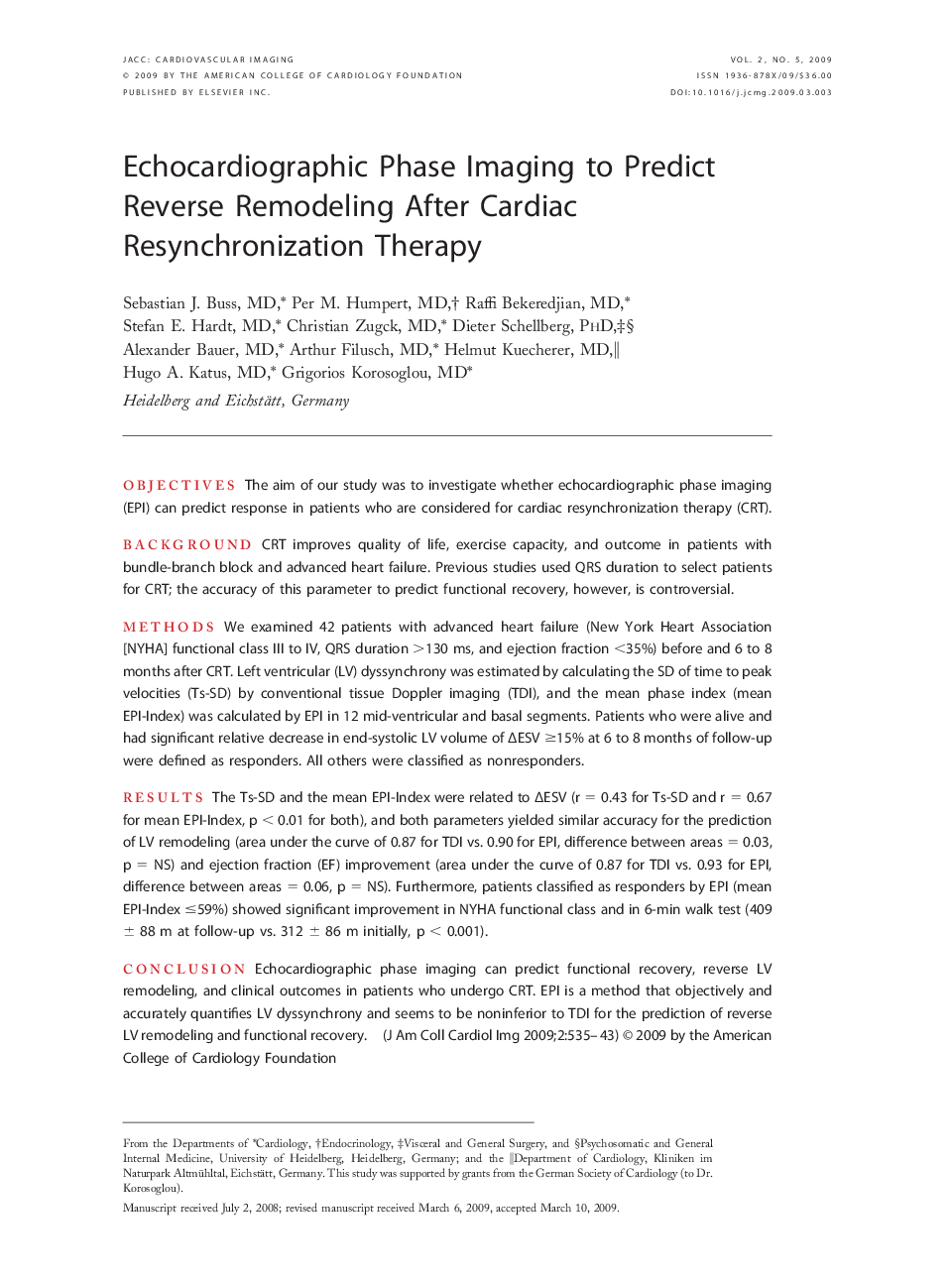| کد مقاله | کد نشریه | سال انتشار | مقاله انگلیسی | نسخه تمام متن |
|---|---|---|---|---|
| 2939112 | 1176973 | 2009 | 9 صفحه PDF | دانلود رایگان |

ObjectivesThe aim of our study was to investigate whether echocardiographic phase imaging (EPI) can predict response in patients who are considered for cardiac resynchronization therapy (CRT).BackgroundCRT improves quality of life, exercise capacity, and outcome in patients with bundle-branch block and advanced heart failure. Previous studies used QRS duration to select patients for CRT; the accuracy of this parameter to predict functional recovery, however, is controversial.MethodsWe examined 42 patients with advanced heart failure (New York Heart Association [NYHA] functional class III to IV, QRS duration >130 ms, and ejection fraction <35%) before and 6 to 8 months after CRT. Left ventricular (LV) dyssynchrony was estimated by calculating the SD of time to peak velocities (Ts-SD) by conventional tissue Doppler imaging (TDI), and the mean phase index (mean EPI-Index) was calculated by EPI in 12 mid-ventricular and basal segments. Patients who were alive and had significant relative decrease in end-systolic LV volume of ΔESV ≥15% at 6 to 8 months of follow-up were defined as responders. All others were classified as nonresponders.ResultsThe Ts-SD and the mean EPI-Index were related to ΔESV (r = 0.43 for Ts-SD and r = 0.67 for mean EPI-Index, p < 0.01 for both), and both parameters yielded similar accuracy for the prediction of LV remodeling (area under the curve of 0.87 for TDI vs. 0.90 for EPI, difference between areas = 0.03, p = NS) and ejection fraction (EF) improvement (area under the curve of 0.87 for TDI vs. 0.93 for EPI, difference between areas = 0.06, p = NS). Furthermore, patients classified as responders by EPI (mean EPI-Index ≤59%) showed significant improvement in NYHA functional class and in 6-min walk test (409 ± 88 m at follow-up vs. 312 ± 86 m initially, p < 0.001).ConclusionEchocardiographic phase imaging can predict functional recovery, reverse LV remodeling, and clinical outcomes in patients who undergo CRT. EPI is a method that objectively and accurately quantifies LV dyssynchrony and seems to be noninferior to TDI for the prediction of reverse LV remodeling and functional recovery.
Journal: JACC: Cardiovascular Imaging - Volume 2, Issue 5, May 2009, Pages 535–543